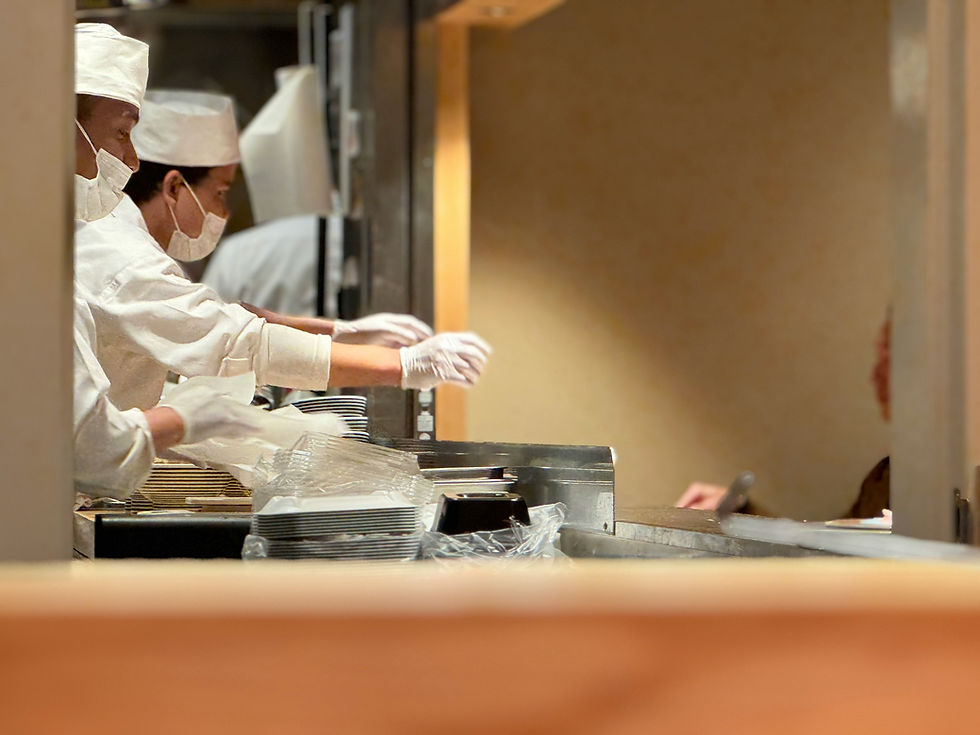Water Terroir: A Drop That Remembers Land【#004】
- amika
- Jul 24
- 7 min read
Updated: Jul 31
A glass of water looks simple, yet every drop carries a silent record of the land it passed through.
Sommelier Lawrence Nakamura guides us on a journey from soft water mountain springs to hard water limestone rivers—tracing how geology, cooking methods, and even kitchen design grow out of water terroir.
“Water Is More Than H₂O” – The Path Shapes the Taste
Interviewer:Does pure water itself really taste different?
Lawrence:Most people think of water as nothing more than H₂O, two hydrogen atoms and one oxygen atom. In school that’s “pure water.” But the water we actually drink always carries trace elements—minerals and compounds it picked up as it moved through soil and rock. That’s why two glasses of water that look identical can feel completely different on the tongue.
Interviewer:So the route a water takes determines its taste?
Lawrence:Exactly. Spring water from a mountain, deep groundwater, a long river, even municipal tap water—each travels a unique path and meets different layers of earth. Its water terroir—the journey and the geology—gives every water its own character. Tasting water is really tracing the memory of the land.
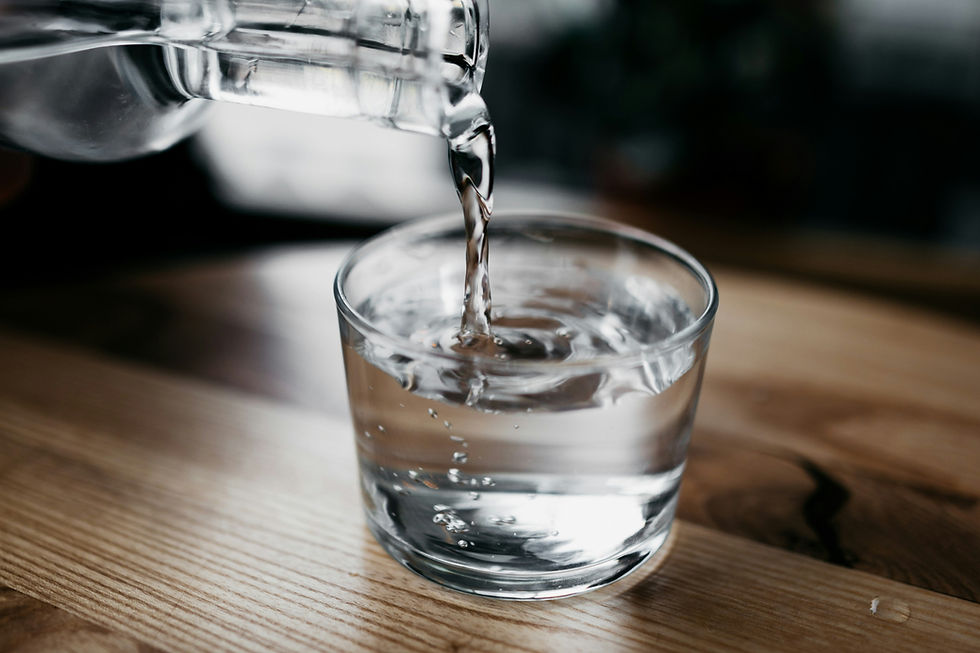
Soft Water vs. Hard Water – Measuring Mineral Contact
Soft Water vs. Hard Water — Measuring Mineral Contact
Interviewer:We often hear about hard water and soft water. What separates the two?
Lawrence:In simple terms: mineral load. The more calcium and magnesium dissolved, the “harder” the water. Less of those minerals means “soft” water.
Interviewer:People say Europe has mostly hard water and Japan mostly soft. Why?
Lawrence:It comes down to landscape scale. Europe is a continent: huge mountains like the Alps feed long, slow rivers. Water spends a lot of time underground, brushing past limestone and other mineral-rich layers—so it gathers plenty of minerals and turns hard.

Japan is an island chain, rugged and compact. Rivers are short and steep; rain runs from mountain to sea in no time. Contact time is brief, so far fewer minerals dissolve—soft water dominates.
And geology matters too: Japan’s volcanic rock doesn’t release minerals easily, while Europe’s limestone does, pushing hardness even higher.
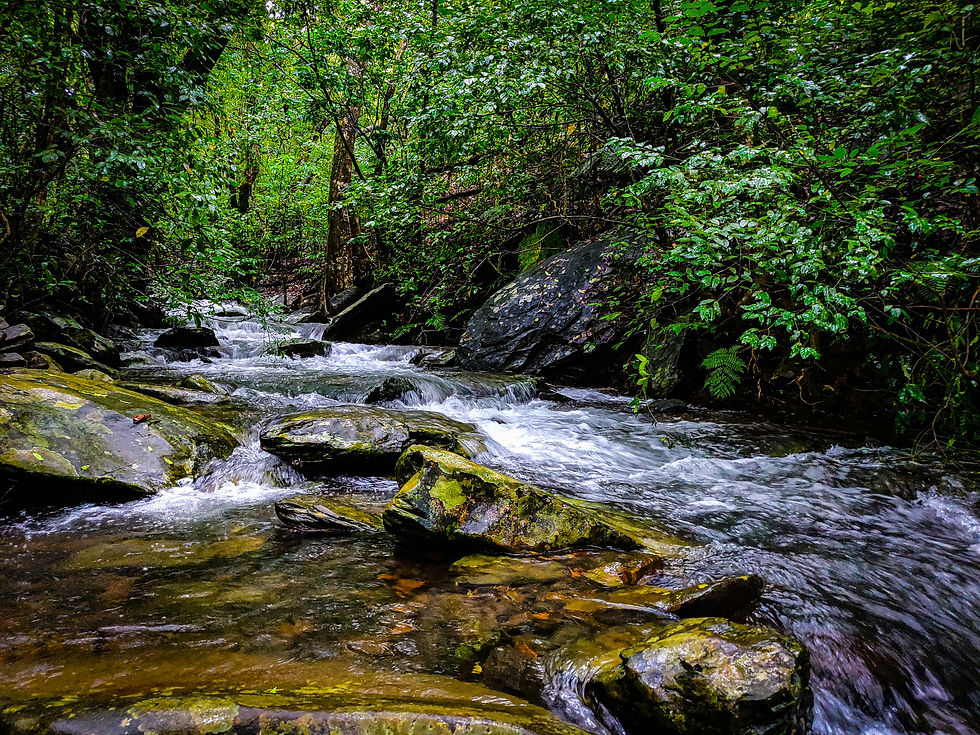
Tasting the Texture – Gentle vs. Sharp
Interviewer:Can you really feel whether a water is “hard” or “soft”?
Lawrence:Yes. Soft water spreads across the tongue in a smooth, gentle sheet. It vanishes quickly, leaving a flat, silky impression.Hard water, by contrast, has a crisp edge—you sense a clean cut, a sharper line of flavour. Many people notice the difference the first time they drink a European mineral water after getting used to Japan’s softness.
Interviewer:Now that you mention it, imported mineral waters do feel different on the tongue.
Lawrence:Exactly. If your palate is calibrated to Japan’s soft profile, hard water shows up with a distinct presence.
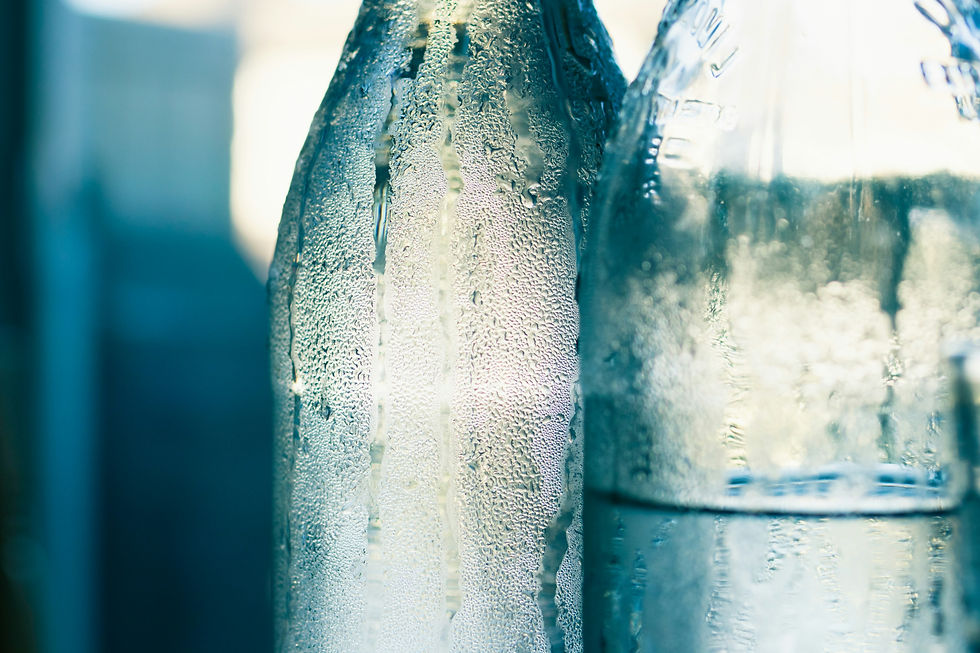
Water Terroir & Cuisine
Why Dashi Thrives in Soft Water
Interviewer:Does the type of water shape a region’s cooking?
Lawrence:Very much so. Japan’s classic dashi—carefully extracted from kombu and katsuobushi—works because the broth begins with low-mineral soft water. If you try the same technique with hard water, calcium and magnesium bind to kombu’s alginic and glutamic acids, blocking extraction. The broth turns dull; aroma and umami stay trapped.
Interviewer:So the basic nature of water reaches right into the foundations of a cuisine.
Lawrence:Exactly. Even inside Japan, water shifts. Honshu’s rivers are gentler; true soft water underpins a vibrant dashi culture.Okinawa’s water, while still classified soft, flows through Ryukyu limestone and picks up a touch more mineral. That subtle hardness partners beautifully with pork broths and oils—think sōki-soba. The water tidies the richness, letting animal fat and umami finish clean.
Note — In hard water, calcium and magnesium ions bind with alginic and glutamic acids in kombu. The reaction toughens the kelp surface and blocks umami-rich compounds from dissolving, making dashi extraction difficult. Soft water lacks these minerals, so the ingredients release flavour and aroma cleanly.
From Firepower to Wok Shape – When Water Designs the Kitchen
Lawrence: Water even dictates cooking methods and heat levels.
Japan’s gentle, slow-simmer style pairs perfectly with neutral soft water: flavours release cleanly, so a quiet bubble is all you need.
China shows the opposite approach. Its rivers flow more slowly, and the water carries a faint earthy note—personality that demands forceful heat. Instead of boiling straight away, cooks often deep-fry ingredients first, then braise, finishing the dish in one burst of high fire that locks flavours in.
The same logic shapes cookware and kitchen architecture.
China has relied on fierce coal and hardwood fires for centuries, and by the Song dynasty metalworkers could forge large iron woks. Their rounded bottoms hug the flame, trapping heat instead of letting it escape—a design made for high-power cooking.
Interviewer:So the classic “Chinese wok” we imagine—the round-bottom pan flashing over a roaring flame—really comes from that need for intense heat, right?
Lawrence:Exactly. Even the hearth evolved to match: one big fire-mouth built to cradle a heavy wok and let the cook toss it freely. That setup pushed stir-frying to the forefront of Chinese cooking.
Because the utensils and the masonry could survive continuous high temperatures, other heat-hungry techniques flourished too—long steaming, and simmering stocks until every last flavour is drawn from the bones. Layer those methods with bold spices, and along great rivers like the Yangtze and the Yellow the result is a cuisine that’s colourful, aromatic, and famously lively.

Lawrence:Japan’s kitchen is the opposite. Heat sources are split by task: a kamado just for rice, and separate irori hearths—large and small—for simmering or grilling. Everything is built on the idea that you’ll nurse the fire, fine-tuning it with wood or charcoal rather than blasting it.
That matches the way we treat flavour. Classic dashi—whether kombu or katsuobushi—is drawn at low temperature or with only a quick burst of heat; we almost never boil it for hours. Because our water is fresh and soft, a gentle simmer extracts what we need, and the final seasoning—soy sauce, tare, clear soup—comes later.
All of which shows that water doesn’t just tilt taste; it helps design an entire food culture.

One Prefecture, Two Waters
Yamagata’s 30 km Contrast
Lawrence:Let me give you an example from my home prefecture, Yamagata. Two sake breweries there use water of completely different hardness—even though they’re less than 30 kilometres apart. The route that water travels, the layers of earth it meets, changes everything about its character and, in turn, the flavour of the sake.
Interviewer:Water can vary that much within a single prefecture?
Lawrence:It can. One brewery draws soft water from the mountain behind it—hardness under 30 ppm, almost velvet-like.The other taps hard water that’s filtered for a long time through the northern mountain range—around 140 ppm, nearly five times harder. That gap alters fermentation speed, aroma, and the final “cut” of the sake.
Interviewer:So geology and water quality are tightly linked. Do you have another case?
Lawrence:Sure—Yamaguchi Prefecture, at the western tip of Honshu. The land is narrow; rivers are short, so you’d expect mostly soft water. Yet many springs there are hard.
Interviewer:I thought short rivers meant soft water and long rivers meant hard. How does Yamaguchi break the rule?
Lawrence:Underground, Yamaguchi is a tangled puzzle of rock layers. Water threads through those strata for a long time, picking up minerals until it emerges as solid hard water.
Interviewer:So the complexity of the bedrock overrides river length.
Lawrence:Exactly. Take the sake Taka: brewed with this mineral-rich water, fermentation kicks off fast, the rice dissolves thoroughly, flavour stays deep, and the hard water’s sharp edge adds a clean finish. You end up with a sake that’s both firm and full.
Geological Memory – West Japan’s Ancient Hardness
Interviewer:Why does Yamaguchi have such unusual geology in the first place?
Lawrence:You have to zoom out to the birth of Japan itself. Around 100 million years ago, the Japanese landmass was still welded to the Eurasian continent. Bit by bit it peeled away, and by roughly 50 million years ago the familiar “arc” of today’s islands had begun to take shape.
Between 30 and 15 million years ago the Sea of Japan opened slowly, pulling the archipelago farther from the mainland. Yamaguchi—and much of western Japan—sits on what used to be the continent’s fringe, so it still exposes those ancient, 100-million-year-old bedrocks at the surface.
Interviewer:That’s an epic timeline.
Lawrence:And it didn’t stop there. Later periods of intense volcanism draped the region in calderas and pyroclastic flows, stacking ever more layers of rock. Those overlapping strata, along with pockets and fractures created underground, became winding corridors for groundwater. As the water threads through, it loads up minerals—exactly why Yamaguchi’s springs emerge so richly hard today.
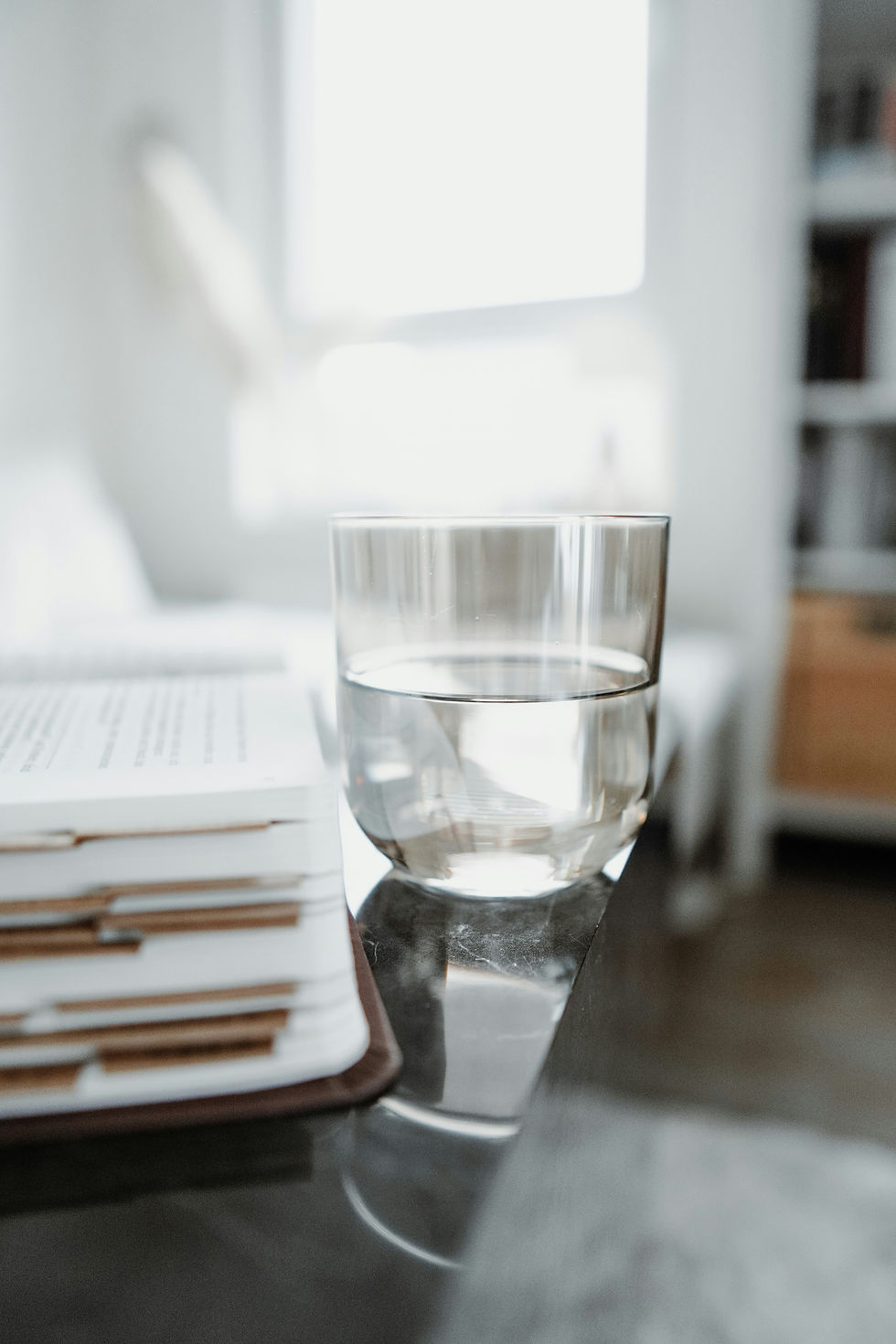
Water as Philosophy – Sipping History
Lawrence:A familiar glass of water hides a whole other universe. To me, water is pure romance: in a single sip you’re tasting hundreds of thousands—sometimes millions—of years of a landscape’s memory. The lives people have lived there, the shapes carved by nature, the cultural ingenuity that followed—all of it rises as flavour. Each time I drink, it feels as if a new story begins.
Interviewer:I never imagined one glass of water could open up so much.
Lawrence:Once you notice those differences, you start tracing every thread—history, culture, cooking techniques, even how kitchens are built. Tasting becomes the doorway to a vast journey. Water is so commonplace we ignore it, but dig just a little and your view of food shifts completely. If you ever want to deepen your sense of flavour, start with water. Follow where it’s been; feel what it carries. You’ll discover a whole new perspective.
Editor’s Note
From mineral traces to kitchen architecture, water terroir shapes how we cook, eat, and remember. May your next sip taste a little wider.
About the SpeakerYoshihito “Lawrence” Nakamura — Certified Sake & Wine Sommelier
With deep expertise in both sake and wine, Lawrence has launched restaurants, curated beverage programs, and advised food-and-drink brands. He joined Apoptosis in 2024, and his lists have earned multiple distinctions, including “Best Sake List in Japan” and “Most Original Wine List in Asia.”
Stay up to date with our latest columns on Instagram and other social channels—follow @apoptosis_day and never miss a post.https://www.instagram.com/apoptosis_day
Apoptosis also regularly hosts tasting events for non-alcoholic beverages,especially for professionals in the food and beverage industry.For more details, please visit the page linked below.



